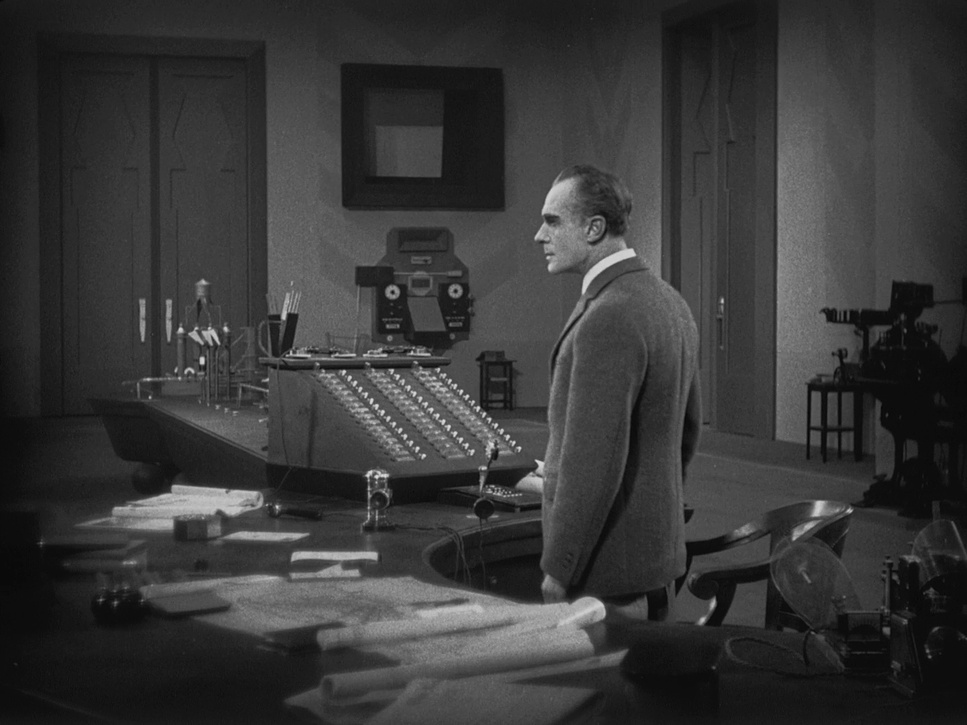Over the years, I’ve analyzed countless films to uncover the subtle and deliberate choices that make them iconic. As a cinephile, I constantly seek inspiration from classics that have shaped the language of cinema. Today, I’m diving into one of the most visually groundbreaking films in history: Metropolis directed by Fritz Lang.
Cinematography Analysis Of Metropolis
About the Cinematographer

The breathtaking cinematography of Metropolis (1927) is the result of a collaborative genius. The trio of Karl Freund, Günther Rittau, and Walter Ruttmann brought their unique expertise to create a visual masterpiece. Karl Freund, an icon in German Expressionist cinema, introduced the dramatic lighting and experimental techniques that define the film’s look. Günther Rittau, a pioneer in special effects, pushed technological boundaries, while Walter Ruttmann brought his skills in composition and visual rhythm to craft a cohesive, futuristic vision. Together, they revolutionized the art of cinematography, making Metropolis a timeless inspiration for filmmakers like myself.
Inspiration for the Cinematography of Metropolis

What stands out most to me as a filmmaker is how Metropolis drew from real-world inspirations and molded them into a vision of the future. The towering skyscrapers and bustling urban landscapes reflect the awe and anxiety of the industrial revolution, with a specific nod to New York City’s skyline. The film is deeply rooted in the aesthetics of German Expressionism, evident in its exaggerated geometric designs and high-contrast visuals that mirror societal tensions.
I’m especially intrigued by the film’s ability to merge architecture and emotion. The upper city’s clean, modernist design symbolizes power and privilege, while the workers’ subterranean world feels oppressive and dystopian. As a colorist, I can’t help but admire how the stark contrasts and textured shadows create a mood that conveys as much about the story as the script itself.
Camera Movements Used in Metropolis

The dynamic and innovative camera movements in Metropolis continue to astound me. Tracking shots, which were revolutionary at the time, bring life to the city, capturing its frenetic energy. One technique that stands out is the Schüfftan process, a clever method using mirrors to seamlessly combine live-action with miniature sets. It’s an ingenious solution that allowed the filmmakers to create the illusion of scale and complexity in their futuristic cityscape.
The precision of these movements, whether sweeping across grand architectural models or focusing on intimate character moments, elevates the storytelling. The film’s ability to create a sense of motion in a static frame reminds me of how essential camera choreography is in drawing viewers into a world.
Compositions in Metropolis

The compositions in Metropolis are nothing short of mesmerizing. As someone who spends hours perfecting visual balance in my own projects, I can’t help but marvel at how meticulously every frame was crafted. The film uses symmetry and geometric patterns to stunning effect, often portraying the mechanization and dehumanization of society.
One of my favorite aspects is how the cinematographers use the frame to depict the social hierarchy. The elite are always elevated—both literally and figuratively—while the workers are confined to the lower parts of the frame. This visual dichotomy strengthens the narrative’s themes of class struggle and inequality. The wide shots of the city are equally impressive, creating a sense of scale and ambition that’s rarely matched, even today.
Lighting Style of Metropolis

Lighting in Metropolis is a character in itself. The high-contrast lighting, synonymous with German Expressionism, creates a chiaroscuro effect that enhances the drama of every scene. This dramatic interplay of light and shadow feels both artistic and functional, serving as a mirror to the emotional and thematic undercurrents of the film.
The Maschinenmensch (Machine-Human) sequences are a masterclass in using light to evoke emotion. The stark, angular lighting casts haunting shadows that amplify the sense of unease and highlight the character’s otherworldly presence. As a colorist, I’m particularly drawn to how light was used symbolically, adding depth to the already layered narrative.
Lensing and Blocking in Metropolis

The lensing choices in Metropolis are as deliberate as they are impactful. Wide-angle lenses capture the sprawling metropolis, immersing viewers in its scale and ambition. These choices allow the cinematographers to emphasize the overwhelming nature of the city and its mechanized society.
Blocking, too, is used as a storytelling device. Actors are positioned within the frame to reinforce the film’s themes of hierarchy and oppression. The rigid formations of the workers echo the repetitive motions of machinery, a visual metaphor that connects humanity to the soullessness of industrialization. This deliberate choreography ensures that every movement within the frame adds to the narrative.
Color in Metropolis

Although originally filmed in black and white, Metropolis has a fascinating relationship with color. Tinting and toning techniques were employed in various versions to evoke specific emotions. For example, warm sepia tones are used to create a nostalgic, human touch, while cold blues emphasize the alienation of the workers’ world. These subtle shifts in tonality offer a glimpse into how color, even in its infancy, could influence mood and storytelling.
As a colorist, I’m particularly fascinated by how these choices have influenced modern restorations of Metropolis. The addition of color in contemporary versions brings a new layer of interpretation while respecting the film’s original intent. It’s a testament to how adaptable and timeless the cinematography of Metropolis truly is.
Technical Aspects: Cameras, Lenses, and Special Effects
The technical innovation in Metropolis is awe-inspiring. Using large-format cameras and advanced lenses, the filmmakers achieved a clarity and scale that was revolutionary for the time. The Schüfftan process, as I mentioned earlier, is a standout example of how technical ingenuity can elevate storytelling. By seamlessly blending live-action with miniatures, the filmmakers created a world that feels both immense and tangible.
The craftsmanship behind the special effects speaks to the filmmakers’ dedication to their vision. Even by today’s standards, the integration of practical effects and visual design is a marvel. It’s a reminder of how creativity can overcome technical limitations to produce something timeless.